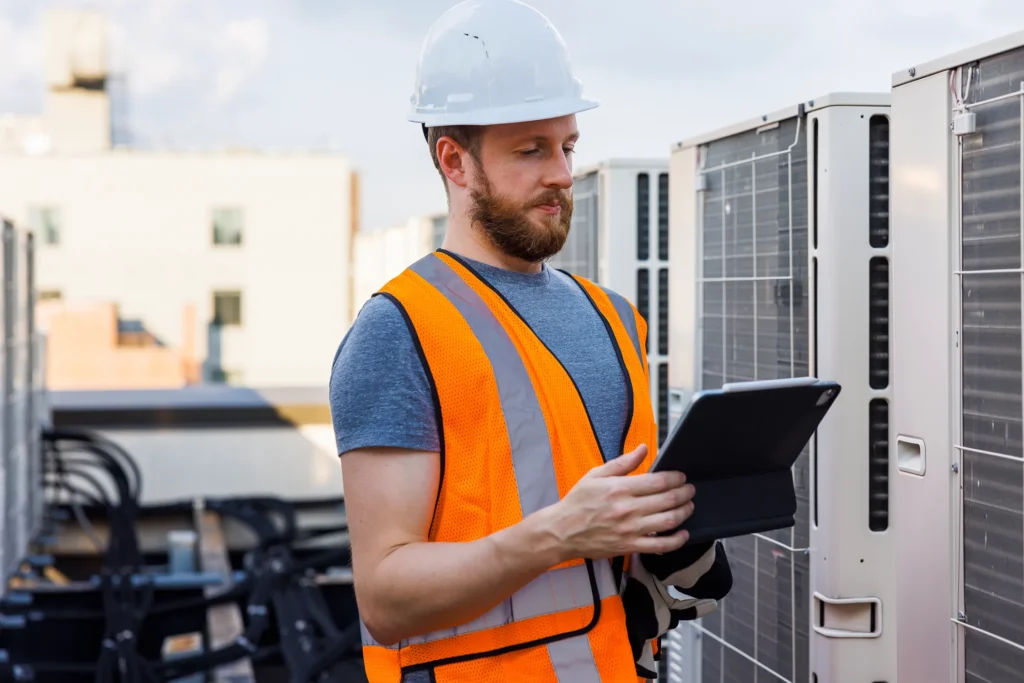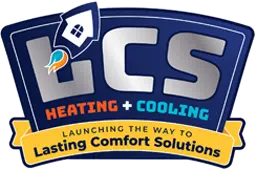HVAC Company In Indianapolis, IN, And Surrounding Areas
Indiana’s weather can be unpredictable. One day, you’re sweltering in the summer heat; the next, you’re bundled up against the winter chill. Finding a reliable HVAC company in Indiana is crucial to maintaining year-round comfort in your home or business. At LCS Heating & Cooling, we’re dedicated to providing exceptional service and innovative solutions to keep your space comfortable, efficient, and healthy.

Contact us today for a free consultation and experience the difference.

Emergency Service
Don't Sweat the Seasons: Ensuring Year-Round Comfort
Beat The Summer Heat:
Our technicians can diagnose and repair any cooling system issues, ensuring your air conditioning keeps you cool and comfortable all summer. We offer various AC unit options to fit your needs and budget, guaranteeing optimal efficiency and performance.
- Expert Cooling System Diagnosis and Repair: When the summer heat strikes, count on LCS Heating & Cooling to keep you cool. Our experienced technicians swiftly identify and resolve issues with your air conditioning system, ensuring uninterrupted comfort during the hottest days.
- Customized AC Unit Selection: Not all homes or businesses are similar, so we offer a range of AC unit options to suit your specific needs and budget. Whether you require a compact window unit or a central cooling system, we’ll help you find the perfect fit for your property.
- Efficiency and Performance Guarantee: With us, you can trust that your chosen AC unit will deliver optimal efficiency and performance, keeping energy costs in check while maintaining a consistently comfortable indoor environment.
Stay Warm In The Winter:
Don’t let winter chills disrupt your comfort. Our team provides comprehensive heating system maintenance and repairs, ensuring your furnace or boiler keeps you warm and toasty throughout the season. We can also help you explore energy-efficient heating options to save money on utility bills.
- Thorough Heating System Maintenance: Before the winter chill sets in, trust us to ensure your heating system is in top condition. Our comprehensive maintenance services include thorough inspections, cleaning, and tune-ups to keep your furnace or boiler running smoothly all winter.
- Swift and Effective Repairs: Should your heating system encounter any issues, our skilled technicians are ready to provide prompt and reliable repairs. From minor adjustments to major component replacements, we’ll restore warmth to your home or business in no time.
- Energy-Efficient Heating Solutions: Looking to save on heating costs without sacrificing comfort? Let us help you explore energy-efficient heating options, such as heat pumps or programmable thermostats, designed to keep your space cozy while reducing your carbon footprint.
Maintain Perfect Indoor Air Quality:
Breathe easy all year round with our air quality solutions. We provide air duct cleaning, humidifier installation, and air filtration system services to improve air quality and create a healthier environment for you and your family.
- Comprehensive Air Duct Cleaning: Contaminants such as dust and allergens tend to build up in air ducts, which can compromise indoor air quality. Our professional duct cleaning services are designed to eliminate debris, ensuring that clean and fresh air circulates throughout your home or business.
- Humidifier Installation for Optimal Comfort: Combat dry indoor air with a humidifier installation from LCS Heating & Cooling. Proper humidity levels enhance comfort and alleviate dry skin, static electricity, and respiratory issues, promoting a healthier living environment.
- Advanced Air Filtration Systems: Protect your family from airborne pollutants with our cutting-edge air filtration systems. Designed to capture and remove dust, pollen, mold spores, and other allergens, these systems ensure your indoor air remains clean and breathable year-round.
Ready to experience unparalleled comfort and air quality in your home or business? Contact us today to schedule your HVAC service and breathe easier all year round.
Unmatched Expertise, Unmatched Comfort: Why Choose Us?
We are committed to delivering a 7-star concierge service, guaranteeing a seamless and stress-free experience from beginning to end. Our team takes the time to understand your unique needs and preferences, providing personalized attention and clear communication at every step. You can always expect:
- Streamlined processes: Our skilled technicians have undergone extensive training to ensure they can proficiently handle any service request that comes their way. With their expertise and efficiency, they will promptly complete your appointment, leaving you with satisfaction and peace of mind.
- Open communication: We keep you up-to-date at every stage of the process and provide all the necessary information to help you make informed decisions before we begin any work. Our aim is to ensure that you have a clear understanding of the available options, empowering you to feel confident in the choices you make.
- Unwavering commitment: Our company always prioritizes your comfort and strives to provide exceptional customer service that ensures your complete satisfaction. You can trust in the quality of our work, as we stand firmly behind it and will do everything in our power to ensure you’re happy with the result. Our team is dedicated to providing you with the best possible experience, and we’re always here to help with any questions or concerns.
Indulge in unmatched comfort by choosing us. Don’t hesitate to reach out today to schedule your HVAC service.
Invest in Your Home, Invest in Comfort: Schedule Your Service Today!
Are you tired of being at the mercy of Indiana’s unpredictable weather? Well, look no further! LCS Heating & Cooling has covered you with our top-of-the-line HVAC solutions that will keep you comfortable all year round. Get ready to experience our HVAC company‘s differences and schedule your free consultation today! You’ll love our convenient appointment scheduling, hassle-free financing options, and flexible payment methods that fit your budget. And don’t forget to follow us on Facebook for exclusive promotions and special offers that you won’t want to miss out on!


